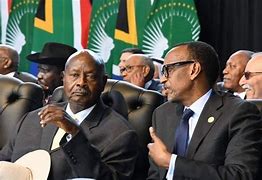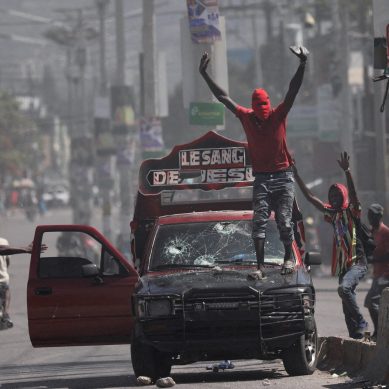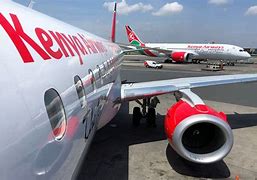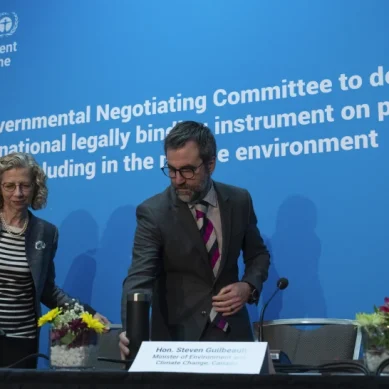
Following the November 1959 conflicts in Rwanda, opposition to Tutsi authorities in most areas became so intense that the population refused to obey Tutsi chiefs. To deal with this situation Guy Logiest instructed Belgian administrators to depose Tutsi chiefs.
Other Tutsi chiefs who had not been deposed simply fled to neighbouring countries. Logiest and his administrators then appointed supporters of the Hutu parties (PARAMEHUTU and APROSOMA) and in some cases the progressive Tutsis members of the RADER party into the vacant positions. These appointments put Hutus in a favourable position to campaign for the Commune elections due in June-July 1960. And so the Rwanda revolution which began in November 1959 ended 22 months later in September 1961 when both the legislative elections as well as the referendum on the monarchy were held.
In the 1961 elections, the Hutu parties won 35 seats out of 44 in the legislative assembly, with 1,006, 339 votes in favour of the republic as against 253,963 for the monarchy. Then on July 1, 1962 Rwanda got its Independence from Belgium.
The Tutsi who went into exile did not accept defeat. They immediately began to organise so as to invade Rwanda and get back to power. The first series of invasions were mounted from Burundi. An invasion was also organised from Uganda. When the news came that on July 5, 1963, a raid had been launched against Rwanda, Prime Minister Obote of Uganda issued a categorical warning: “I wish to make it clear that I will not tolerate this sort of activity…We have no intention within the context of the Addis Ababa spirit and Charter of allowing Uganda to be used as a base for any attacks or subversion against any African state….If [our] hospitality is abused, and refugees use or attempt to use Uganda as a base to attack our neighbours, we shall have no alternative but to withdraw the protection we have granted to these people.”
The next time the Tutsis got active in Uganda was during Idi Amin’s rule. However, the activities during Idi Amin’s rule did not include attacks on Rwanda. They were limited to giving support to Amin. “Not surprisingly, many Banyarwanda welcomed the overthrow of Obote – as did many members of other embattled non-indigenous minorities in Uganda, the Asians. Amin reciprocated, bringing the deposed Tutsi king, Mwami Kigeri, from Nairobi to Uganda and allocating a house and a car for his use.
Many believed that Amin had promised to help reestablish the monarchy in Rwanda and in that manner, ensure the return of refugees. Not for the first time in the history of an embattled minority it sought refuge in a close relationship with an isolated power. A number of Banyarwanda refugees joined Amin’s army and secret service.
Following the Amin’s overthrow, there were claims that next to the southern Sudanese the Banyarwanda constituted the biggest number of aliens in his security forces, especially in the dreaded intelligence organisation, the State Research Bureau.”
The Tutsis were to get seriously involved in the Museveni’s war of the early 80s. This is how Mamdani depicts the Tutsi influence as well as numbers in Museveni’s NRA: “When the NRA entered Kampala in 1986, Col Fred Gisa Rwigyema was its deputy commander. In 1987 he was appointed Deputy Minister of Defence in Kampala. Paul Kagame became the acting chief of military intelligence of the NRA. Besides Kagame and Rwigyema, there were others, lesser known but still highly placed Banyarwanda Tutsi. Peter Baingana was head of medical services, Chris Bunyenyezi was commander of the 306 Brigade. All in all, six officers were part of senior command of the RPF when it crossed into Rwanda: Lieutenant-Colonel Waswa, and Majors Kagame, Baingana, Kaka, Bunyenyezi, and Nduguta. And they were just the tip of the iceberg.”
“By 1988, it was an open secret in Uganda and Rwanda that Tutsi members of the Ugandan army were planning an invasion of Rwanda. Britain supported both the formation of the RPF and its objectives, and from early 1990 onward, British intelligence services developed a first-rate rapport with the commanders of the guerrilla RPF who ‘had an excellent and very strong intelligence machine inside Rwanda’ (Interview with former British diplomat, 2006). From their base in Uganda, the RPF kept British intelligence abreast of developments within Rwanda.
According to a former British official, Kampala, it appeared to many that both the government of Uganda and the RPF were the cat’s paw of the British government, with the RPF being groomed to overthrow the Francophone government of Juvenal Habyarimana in Rwanda (Interview, 2006). Military training of the guerrilla RPF in preparation for their incursions into Rwanda was provided by British forces at its military base in Jinja, Uganda (Destexhe 1995) as well as by-the US military.
By August 1990 the RPF had started to prepare a full scale invasion of Rwanda despite the government in Kigali having taken several significant political steps in an effort to avert the RPF invasion. This included the facilitation of the repatriation of the Tutsi refugees from Uganda as demanded by the RPF, with the initial phase scheduled for November 1990. Uganda-Rwanda negotiations on the rights of refugees to claim Rwandan nationality had reached ‘an advanced stage’ when RPF attacked in October 1990.
It should be noted that only three days prior to the attack that then Rwandan President Juvenal Habyarimana had announced at the UN General Assembly in New York, key concessions to refugees. However, the RPF chose not to allow the validity of Habyarimana’s initiatives to be confirmed.
It is ironic that the incursion should happen at a time of internal reform as opposed to repression in Rwanda, during a period when President Habyarimana was making efforts to appease the rebel forces. The question is: why this anomaly?
If RPF wanted a political solution to their problem in Rwanda, why would they ignore Habyarimana’s overtures and persist with the war? The answer is simple: their principals, that is, the British and Americans were not aiming at solutions to Rwanda’s political problems. They were using those problems as ruse to get the RPF to conduct a war they believed would get rid of the Habyarimana regime and erase French influence.
Britain’s SIS had been actively engaged in Uganda and was in communication with the RPF from whom it collected intelligence on the Rwandan government. The relationship between SIS and the RPF ensured the SIS was fully cognisant of the objectives of the RPF and its ability “to take Kigali pretty much at will.” Because of the level of engagement of both British and American military and intelligence services in Uganda and their contact with the commanders of the RPF, it is inconceivable that the order for the October 1990 RPF invasion of Rwanda was given without their knowledge, approval and active assistance. Such claims have been forwarded in written submissions to the ICTR by Africa Direct, according to Chossudovsky’s 2005 report.
When the RPF mounted its offensive into Rwanda from southern Uganda on October, 1990, the ensuing developments were reported fastidiously to the FCO in London. Throughout October 1990, reports were forwarded daily from the British diplomatic offices in Kampala and Kinshasa to London, giving detailed updates about the incursion, which “the Ugandan government has made strenuous attempts to distance itself from.” Further telexes advised London of mounting suspicions, both in Rwanda and Uganda, of “connivance at senior levels in the preparations for the incursion into Rwanda by…the Rwandan Patriotic Front…and Ugandan collusion.”
Further, according to Mamdani still, about 4,000 soldiers from the NRA left on September 30 to go and start the war against the government of Habyarimana. As should have been expected the invasion shocked the Habyarimana regime.
“Once it recovered from the shock of the initial attack, the Rwandan army was able to repulse the invasion –with support from French, Belgian and Zairean troops. While guerrilla ranks were in great disorder, the RPF allowed the Habyarimana regime to put on the mantle of defender of the nation in the face of Tutsi threat. Its legitimacy rose overnight in the ordinary Hutu eyes. This fact, however, was yet to register with the combatants of RPF.
By the end of November 1990, many RPF soldiers had been killed and thousands were scattered by the assault of the Rwandan army. About this time Major Paul Kagame interrupted his military training course in the United States and took charge of the RPF. Pulling together some 2,000 men, he withdrew into the cold but heavily forested Virunga mountains in the northwest of Rwanda, along the Uganda border.
By the middle of 1991 he had reportedly rebuilt the RPF to a 15,000-strong force. By the end of the year, the RPF had taken control of a strip of territory along the Uganda border stretching some 32 kilometres into Rwanda.” Unfortunately for the RPF and its sponsors, this very spectacular military advances was to meet a most unexpected political result. Prunier tells us in an account Mamdani described as highly sympathetic to the RPF: “Contrary to expectations of the RPF, local Hutu peasants showed no enthusiasm to being liberated’ by them–they had run away from the area of guerrilla operations.”
Behind this apparently spectacular performance is of course the role of Britain as well as the US, the real powers behind the invasion. They supplied weapons as well as aerial intelligence. Contrary to this fact, Mamdani sought to absolve Museveni and other external forces in the activities of the RPF: “We shall later see the same explanation surface in hostile accounts of Rwanda Patriotic Front (RPF) capturing power in 1994: as with Belgium and Guy Logiest in 1959, the role of Uganda and Museveni would be highlighted to explain away both the RPF invasion of October 1990 and the capture of power in 1994 as the outcome of an external conspiracy.”
However, contrary to what Mamdani is telling us here, Professor Michael Chossudovsky of Global Research Centre based in Toronto, Canada, had this to say: “From 1989 onwards, America supported joint RPF [Rwandan Patriotic Front]-Ugandan attacks upon Rwanda…There were at least 56 “situation reports” in [US] State Department files in 1991…As American and British relations with Uganda and the RPF strengthened, so hostilities between Uganda and Rwanda escalated…By August 1990 the RPF had begun preparing an invasion with the full knowledge and approval of British intelligence,” Professor Michael Chossudovsky also tells us.
The war did not affect efforts to resolve the differences. A summit was organised in Dar es salaam that was attended by President Habyarimana. After the meeting, on his way back to Rwanda, he gave a lift to the President of Burundi in his plane. As the plane was negotiating its landing in Kigali Airport it was shot down, killing all on board. The death of Habyarimana unleashed the most fervent flurry of the Hutus against the Tutsis.
The ensuing bloodbath claimed more than 800,000 lives of Tutsi and Hutu moderates.
- A Tell report / By The Conscious Ugandans











